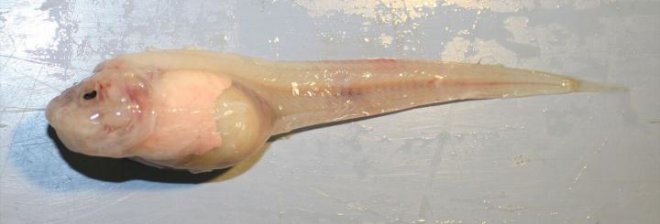
An international research team discovered a new species of fish thriving at a depth of 8,000 meters (26,200 feet) along the Mariana Trench near Guam. The newly found snailfish are small, translucent, without scales and have good survival strategies to keep them alive in depth where only a few other organisms could actually survive.
According to the journal Zootaxa, the new snailfish species have been named as Mariana snailfish. It has been scientifically named as Pseudoliparis swirel, honoring Herbert Swire, an officer on the HMS Challenger expedition which discovered the Mariana Trench in the late 1800s.
According to reports, Mackenzie Gerringer, from University of Washington's Friday Harbor Laboratory said, "This is the deepest fish that's been collected from the ocean floor, and we're very excited to have an official name. They don't look very robust or strong for living in such an extreme environment, but they are extremely successful."
DNA analysis and 3-D scanning of specimen fish collected from depths between 6,900 meters to 8,000 meters determined it as a new species. Mackenzie Gerringer and her team collected 37 specimen fish samples from different depths near the San Juan Island during their research trips in 2014 and 2017.
The fish preyed on tiny crustaceans and shrimps in large clusters using suction of their mouth. They were found dominant in parts of the Mariana Trench, the deepest stretch of ocean in the world that is located in the western Pacific Ocean.
"Snailfishes have adapted to go deeper than other fish and can live in the deep trenches. Here they are free of predators, and the funnel shape of the trench means much more food," said Thomas Linley of Newcastle University,
The researchers from Japan have found the fish at the 8,134 meters depth and have recorded its footage as the deepest sighting so far.









